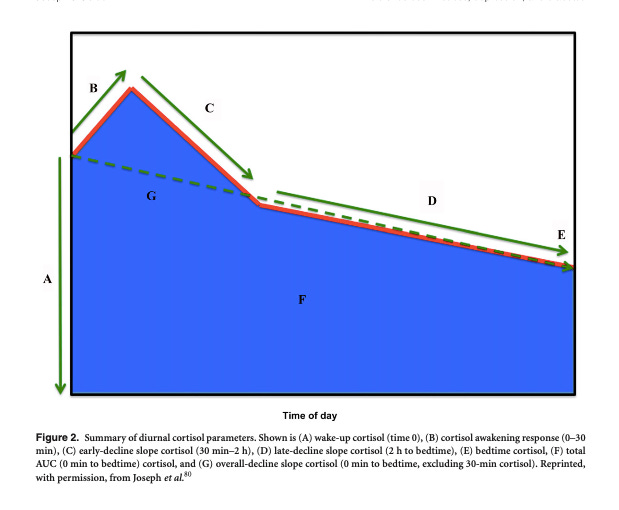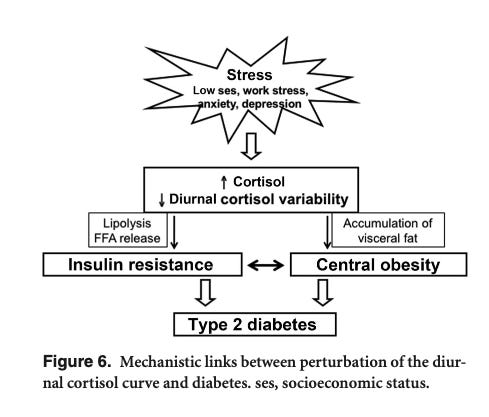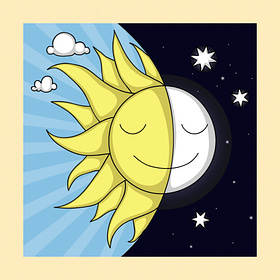Cortisol Part II: Optimal Rhythm
The awakening response, cortisol slopes, and how cortisol *should* look around the clock
Welcome to the second article in my new cortisol series. Last time, I shared the view that cortisol is a natural hormone the body needs. Cortisol increases in response to stress, but itself, is not bad. Today, I'll share with you the optimal daily cortisol rhythm. As you may remember, cortisol plays a big part in your circadian rhythm.
Optimal daily cortisol rhythm
Cortisol should peak in the morning around waking and the first activities of the day (see slope B in the below graphic). Then, across the day, cortisol should fall (decline) until reaching its daily low at bedtime (see slopes C and D in the below graphic). In the wee hours of the morning, cortisol should begin rising again until its peak around waking (labeled as A).

You are familiar with the urgency of waking up and needing to go pee first thing. This is cortisol, and in a gentler world, this feeling would be the most "stressful" experience of your day.
Are you surprised to learn we would be hoping to see a steep peak every morning? This makes sense when you remember cortisol as a wakefulness hormone.
You are familiar with the urgency of waking up and needing to go pee first thing. This is cortisol, and in a gentler world, would be the most "stressful" part of the day.
To look at this daily rhythm of cortisol another way, notice the decrease from morning to evening (slope G). Depending on who you learn about the cortisol rhythm from, they may refer to this slope as:
diurnal cortisol slopes
diurnal cortisol declines
diurnal cortisol variability
diurnal cortisol rhythms
or amplitude of the circadian cortisol rhythm
What we want to see is cortisol getting ever lower across the day. This correlates with you feeling ever sleepier, across the day until bedtime. Since cortisol is the wakefulness hormone, it makes sense that you don't need much of it at bedtime.
And, since stress raises cortisol, it makes sense that stress makes it hard to sleep, right? It turns out, there are a lot of consequences to stress beyond sleeplessness, such as mental and metabolic problems1:

But learning about problems is for another day.
Today's post was all about how cortisol should look. Next time, we'll look at why cortisol rises with stress, as well as what else it does in the body (like, did you know that pretty much every cell in the body can be a potential target for cortisol!?).
Here’s the next post:




